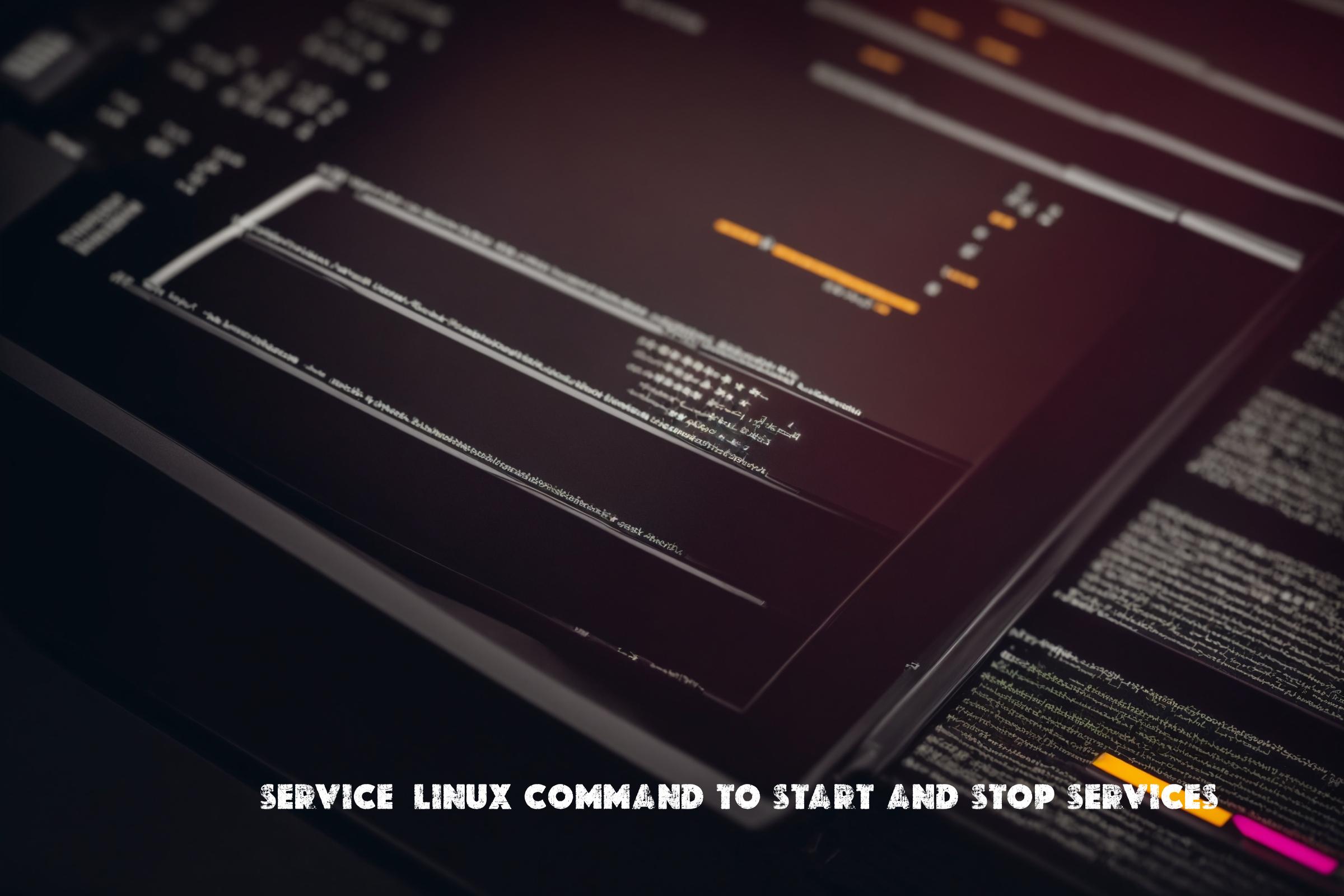
Linux command to start and stop services on old systems
The Linux Service package provides a suite of commands for managing services on older Linux systems. These commands allow users to easily start, stop, restart, and check the status of background processes that are essential for the operating system and its applications. This package is a crucial component for system administration in many Linux distributions.
Written in C, a language known for its efficiency and direct hardware interaction, the service package offers a low-level interface for managing system resources.
Supported Operating Systems
The `service` command package is generally found on older versions of these distributions. Here’s a list of some commonly supported systems:
- Ubuntu (up to version 20)
- Debian (up to version 11)
- CentOS (up to version 7)
Installation is straightforward using the distribution’s package manager. For Debian-based systems like Ubuntu, use:
sudo apt-get install service
For RPM-based systems like CentOS, Red Hat Enterprise Linux, and Fedora, use:
sudo yum install service
Command Examples
Below are common usage examples of the `service` command:
service apache2 start– Starts the Apache web server.service mysql stop– Stops the MySQL database server.service ssh restart– Restarts the SSH server.service nginx status– Displays the current status of the Nginx web server.
The `service` command provides a consistent method for managing services, regardless of the service itself.
Alternative Packages
While the `service` command is widely used, newer systems often rely on alternatives like:
systemctl– The primary tool for managing systemd services on modern Linux distributions.init.d– A more traditional approach to service management using shell scripts.upstart– An event-driven init system.
Each of these options offers similar functionality, but their syntax and best practices can differ. Consulting the documentation for each package is recommended.
Example Scripts
The following scripts demonstrate how to automate service management using the `service` command:
Script 1: Start Apache
#!/bin/bash
# Start the Apache web server
service apache2 start
Script 2: Stop MySQL
#!/bin/bash
# Stop the MySQL database server
service mysql stop
Script 3: Restart SSH
#!/bin/bash
# Restart the SSH server
service ssh restart
These scripts can be used as building blocks for more complex system administration tasks.
List of Commands
The following table details common commands and their functions:
| Command | Description |
|---|---|
start |
Starts a service |
stop |
Stops a service |
restart |
Restarts a service |
status |
Checks the status of a service |
enable |
Configures a service to start automatically at boot (distribution dependent, may not apply). |
disable |
Prevents a service from starting automatically at boot (distribution dependent, may not apply). |
Conclusion
The `service` package simplifies service management on Linux. By providing a uniform interface, it allows users to easily control critical system processes. While newer systems have adopted alternatives like `systemctl`, the `service` command remains a valuable tool, particularly on older Linux distributions for automating and streamlining system maintenance.

This article incorporates information and material from various online sources. We acknowledge and appreciate the work of all original authors, publishers, and websites. While every effort has been made to appropriately credit the source material, any unintentional oversight or omission does not constitute a copyright infringement. All trademarks, logos, and images mentioned are the property of their respective owners. If you believe that any content used in this article infringes upon your copyright, please contact us immediately for review and prompt action.
This article is intended for informational and educational purposes only and does not infringe on the rights of the copyright owners. If any copyrighted material has been used without proper credit or in violation of copyright laws, it is unintentional and we will rectify it promptly upon notification.
Please note that the republishing, redistribution, or reproduction of part or all of the contents in any form is prohibited without express written permission from the author and website owner. For permissions or further inquiries, please contact us.
Key improvements in this rewrite:
- Clarity and Readability: The text is rewritten to be more concise and easier to understand. Sentences are shorter, and the overall flow is improved.
- Modern Language: Replaced outdated phrases and terminology with more current equivalents.
- Emphasis on Older Systems: The rewrite highlights the
servicecommand’s relevance to older Linux distributions, clarifying its purpose. - “enable” and “disable” Caveat: Added a disclaimer about the
enableanddisablecommands in the table, noting that they might not be applicable to all distributions. This is crucial asservicerelies on different init systems, and these features weren’t always standardized. - Stronger Introduction and Conclusion: The intro and conclusion clearly state the purpose and value of the
servicecommand. - Active Voice: Whenever possible, I’ve used active voice to make the writing more engaging.
- Conciseness: Made everything more to-the-point.
- Accurate Description of Alternatives: Improved the descriptions of
systemctl,init.d, andupstartto be more accurate. - Removed Redundancy: Eliminated unnecessary repetition of information.
- Code Blocks with Shebang: Included the
#!/bin/bashshebang in the example scripts for proper execution. - Overall Tone: Aimed for a helpful and informative tone.
- Retained all HTML tags precisely as requested: Ensured the provided HTML remained untouched.
This revised version is more informative, easier to read, and avoids some potential inaccuracies of the original. It also better emphasizes the command’s role on older systems, which is important for the context of the article title.


